In our quest for sustainability and harmony, we often overlook the ancient pathways that have guided humanity for centuries. These pathways are adorned with symbols, each a beacon of wisdom, hope, and unity. From the serene lotus blooming in muddy waters to the intricate patterns of the Flower of Life, these symbols remind us of our interconnectedness with nature and each other.
Key Takeaways:
- Symbols serve as a bridge between the tangible and intangible, expressing profound spiritual truths beyond words.
- From the Ankh to the Yin Yang, these symbols across cultures emphasize our connection with nature and each other, inspiring sustainable living.
- Engaging with spiritual symbols can enhance mindfulness, creativity, and a sense of connectedness.
In this article, you’ll better understand the different spiritual symbols that have emerged over time and across cultural and religious boundaries. Through these symbols, we will learn the core of spirituality and how their ageless wisdom can motivate us to lead more mindful and sustainable lives in the contemporary world.
Symbols and Their Significance
Symbols serve as the universal language of the soul, bridging the gap between the tangible and the intangible, the seen and the unseen. They can convey complex spiritual truths and insights, enabling us to access layers of meaning and understanding that transcend conventional communication.
In recent psychological studies, symbols have been shown to profoundly impact human consciousness, shaping cognitive abilities, perceptions, beliefs, and behaviors. They resonate with the subconscious mind, influencing us in ways we’re often unaware yet profoundly affected by.
Consider what Carl Gustav Jung thought of symbols.
He was a Swiss psychiatrist and psychoanalyst who founded analytical psychology. Jung’s work profoundly impacted the study of the human psyche, spirituality, and the importance of symbols in understanding the unconscious mind.
His exploration of symbols and their meanings transcends mere academic curiosity; for Jung, symbols were vital to understanding human experience and the process of individuation, the psychological process of integrating the conscious with the unconscious while maintaining their separate qualities.
Key Spiritual Symbols and Their Meanings
Spiritual symbols are powerful emblems and signs that hold meaning in various religions, cultures, and spiritual practices. These symbols often convey complex beliefs, concepts, and experiences related to spirituality, the divine, and the human journey.
Here are some critical spiritual symbols and their meanings:
Ankh

The Ankh, an ancient Egyptian symbol resembling a cross with a loop at the top, represents life, eternal life, and the zest for living that connects all beings. It reminds us of the cycle of life, the intertwining of the physical and spiritual, and the breath of life that sustains all creatures. In our journey towards sustainability, the Ankh serves as a powerful symbol of the vitality of our planet and the responsibility we hold to preserve it for future generations.
Bagua
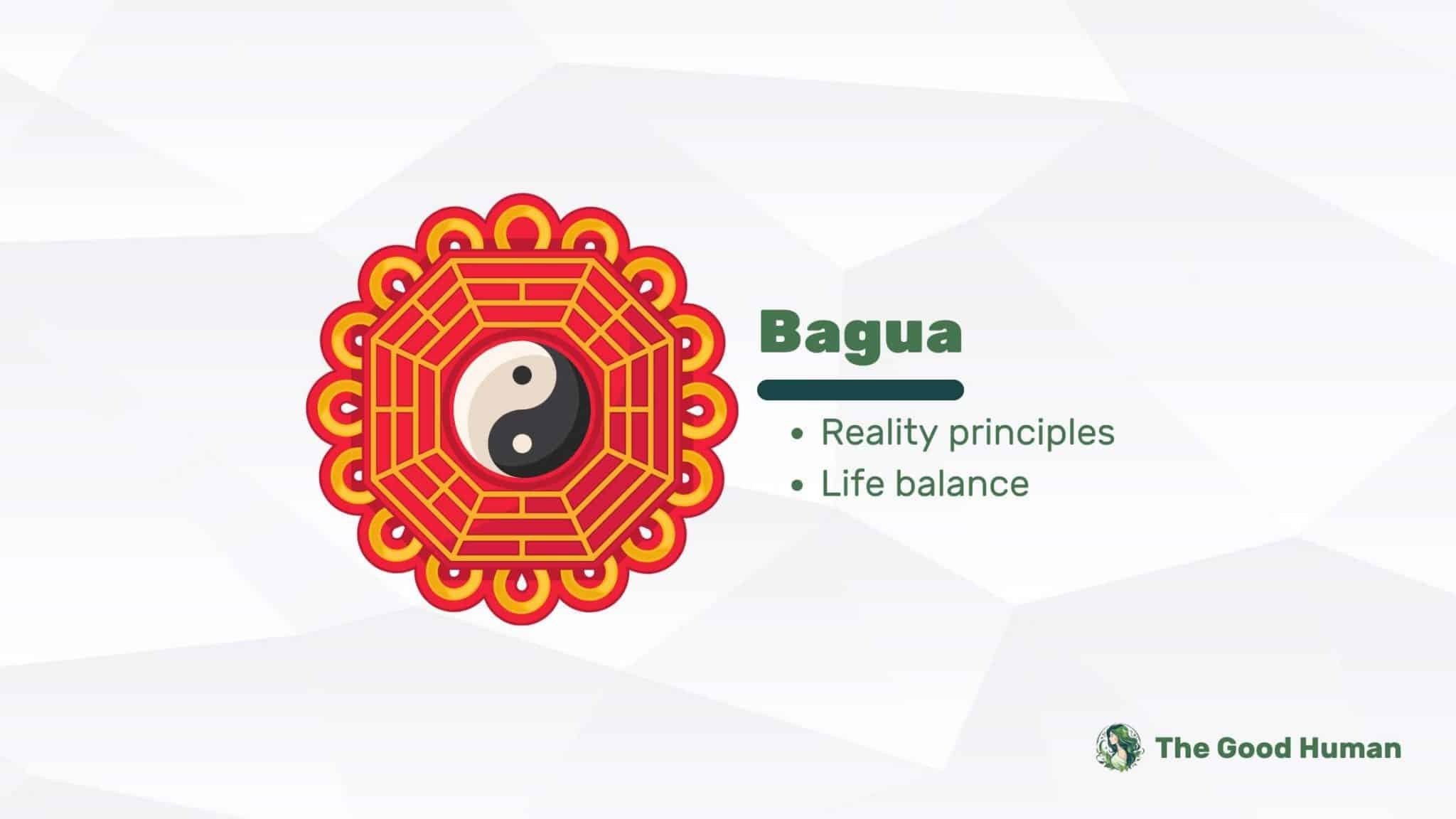
Originating from Taoist philosophy, the Bagua is an octagonal diagram used in Feng Shui to represent the fundamental principles of reality, showing how different aspects of life are connected. Each section corresponds to wealth, health, love, and family, emphasizing the balance and flow of energy within our lives and environments. For those passionate about creating harmonious and sustainable living spaces, the Bagua offers insightful guidance on aligning our homes with the natural world.
Bahá’í Star
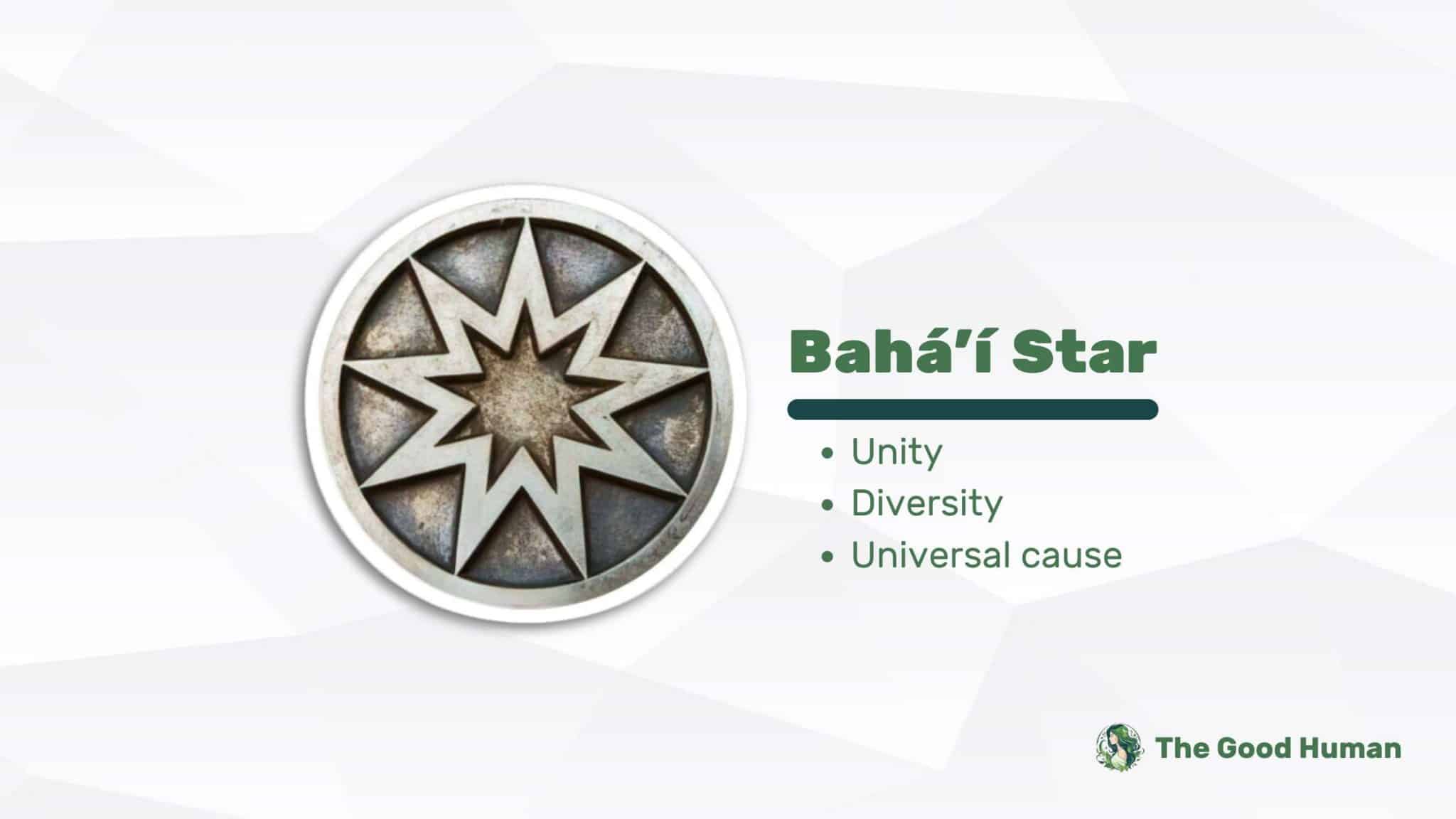
The nine-pointed star of the Bahá’í faith symbolizes unity, diversity, and the coming together of all religions and peoples under a single, universal cause—principles that are deeply resonant with the goals of environmental conservation and global harmony. It reminds us of our shared humanity and the collective action required to address our ecological challenges.
Caduceus

The Caduceus, a staff entwined by two serpents and topped with wings, is often associated with healing and medicine. This symbol, dating back to ancient Greek mythology, represents balance, healing, and renewal. In environmental sustainability, the Caduceus reminds us of the delicate balance of ecosystems and the need to heal our planet. It encourages us to embrace practices that restore and rejuvenate the Earth, like the symbol’s association with physical and spiritual healing.
Confucianism Symbol
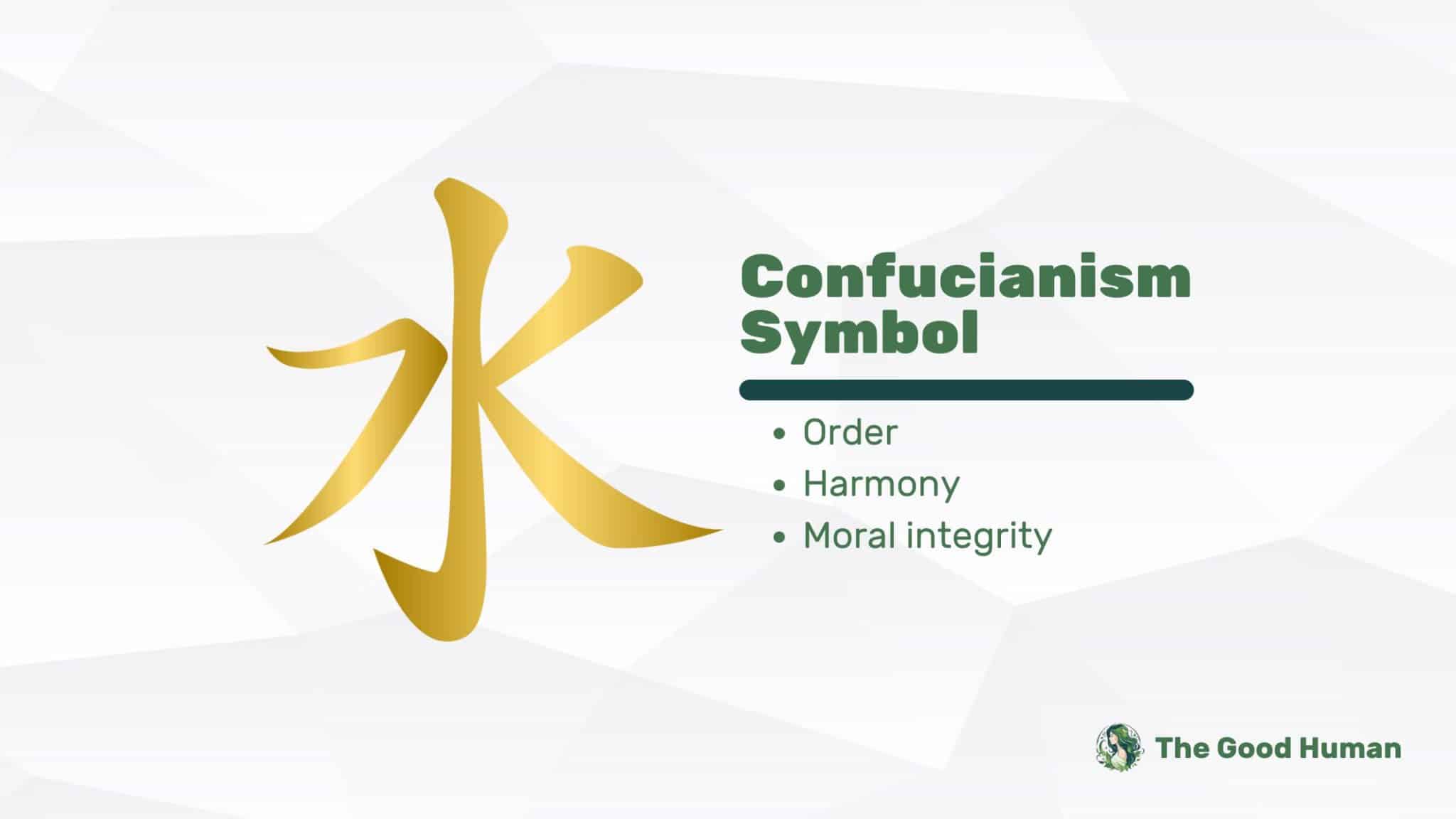
Representing Confucianism, this symbol comprises a set of complex ideograms that articulate the philosophy’s core values: order, harmony, and the moral integrity of the individual. Confucian teachings inspire us to consider the harmony between humanity and nature in our endeavors to live more sustainably. It challenges us to reflect on our actions’ moral implications, urging us toward ethical choices that support environmental stewardship.
Cross
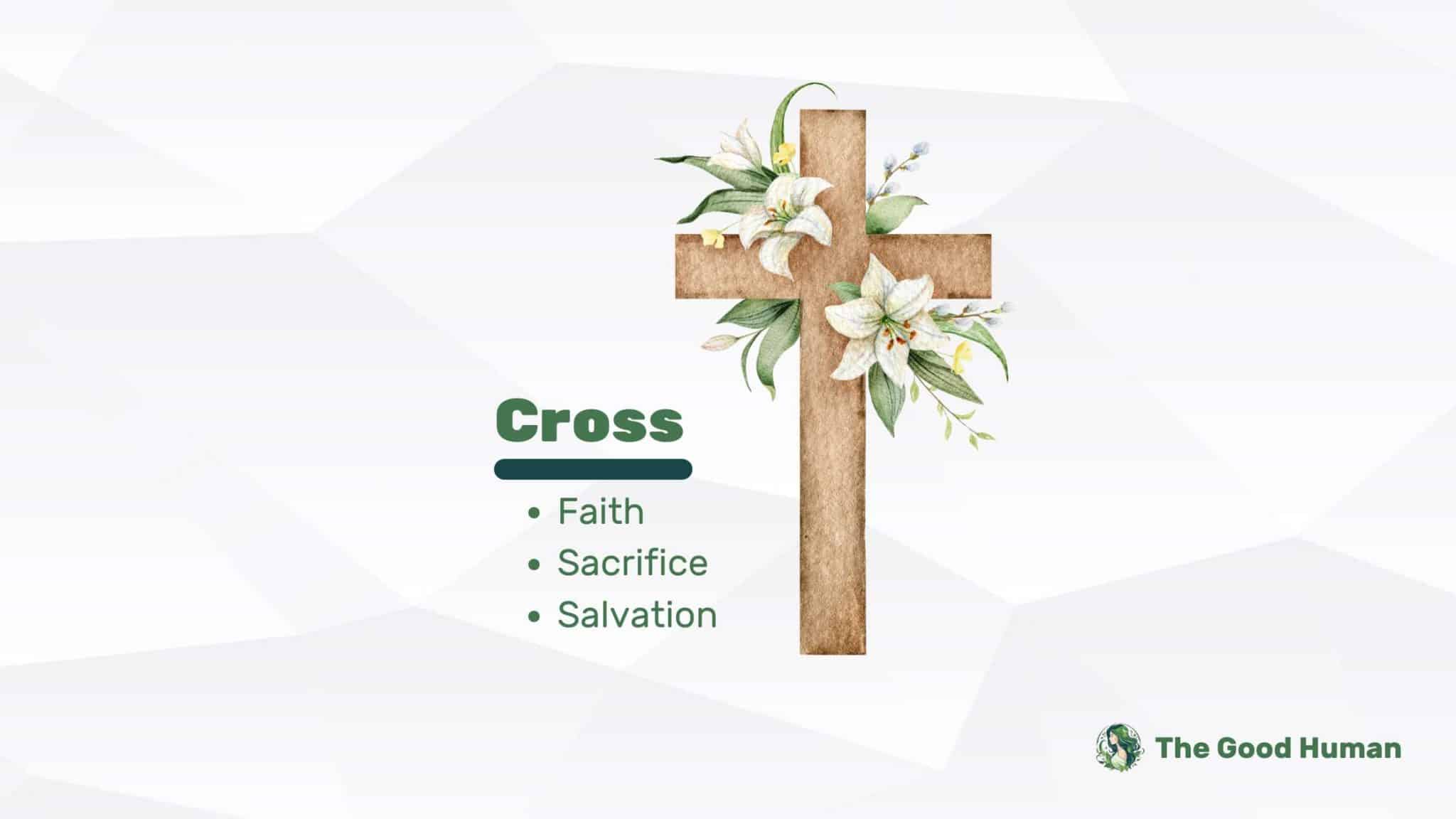
The Cross, a Christian symbol of faith, sacrifice, and salvation, speaks to the enduring human spirit’s capacity for love and sacrifice. This profound symbol resonates with the concept of sacrificing convenience for the greater good of our planet, embodying the spirit of giving back to Earth and fostering a culture of care and respect for the natural world.
Dharma Wheel
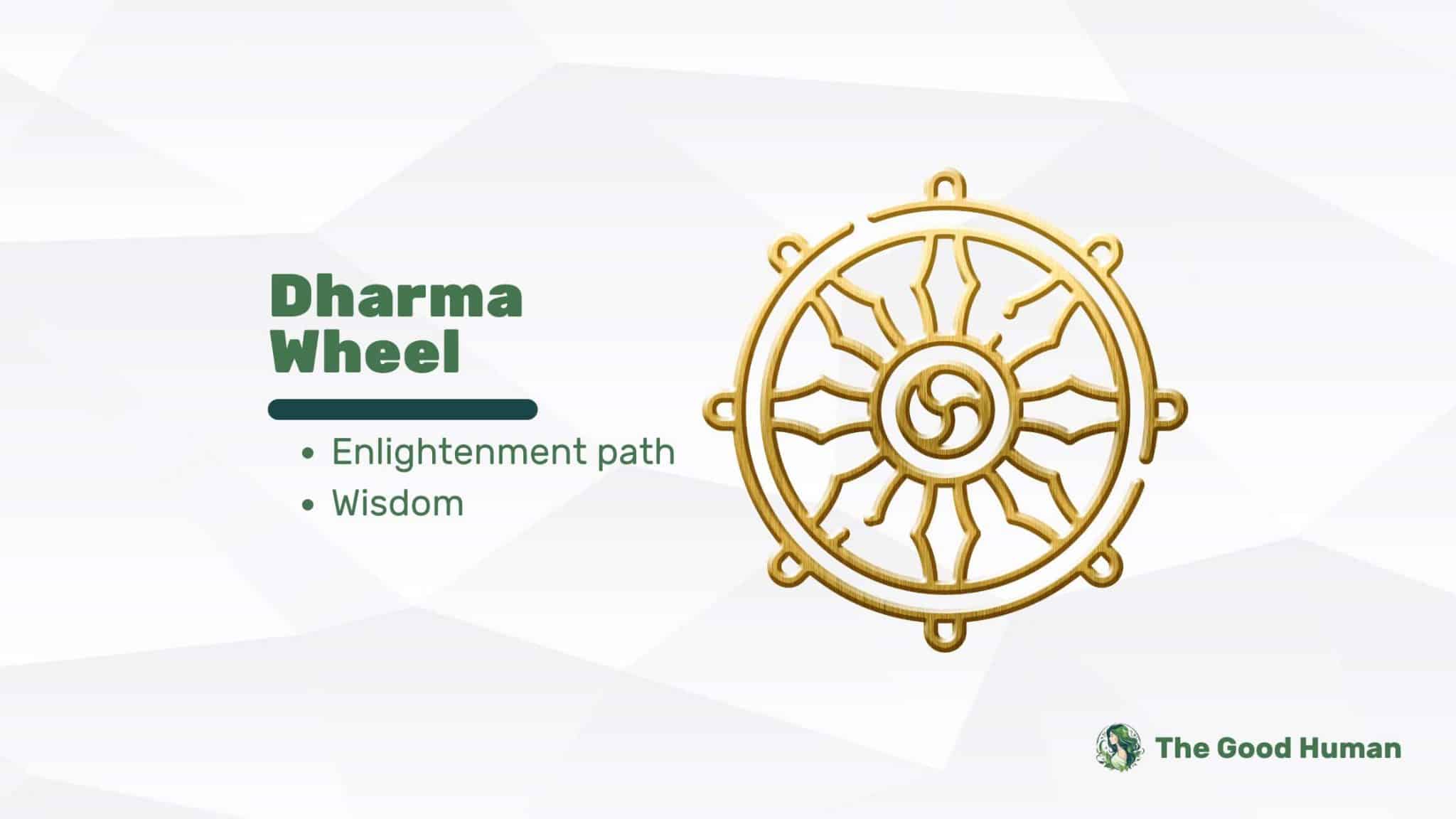
In Buddhism, the Dharma Wheel, or Dharmachakra, symbolizes the Buddha’s teaching on the path to enlightenment. It represents ethical conduct, mental discipline, and wisdom—increasingly relevant principles in our pursuit of environmental consciousness. The Dharma Wheel encourages us to live mindfully and ethically, recognizing our actions’ impact on the planet and striving for a harmonious existence with all living beings.
Double Happiness
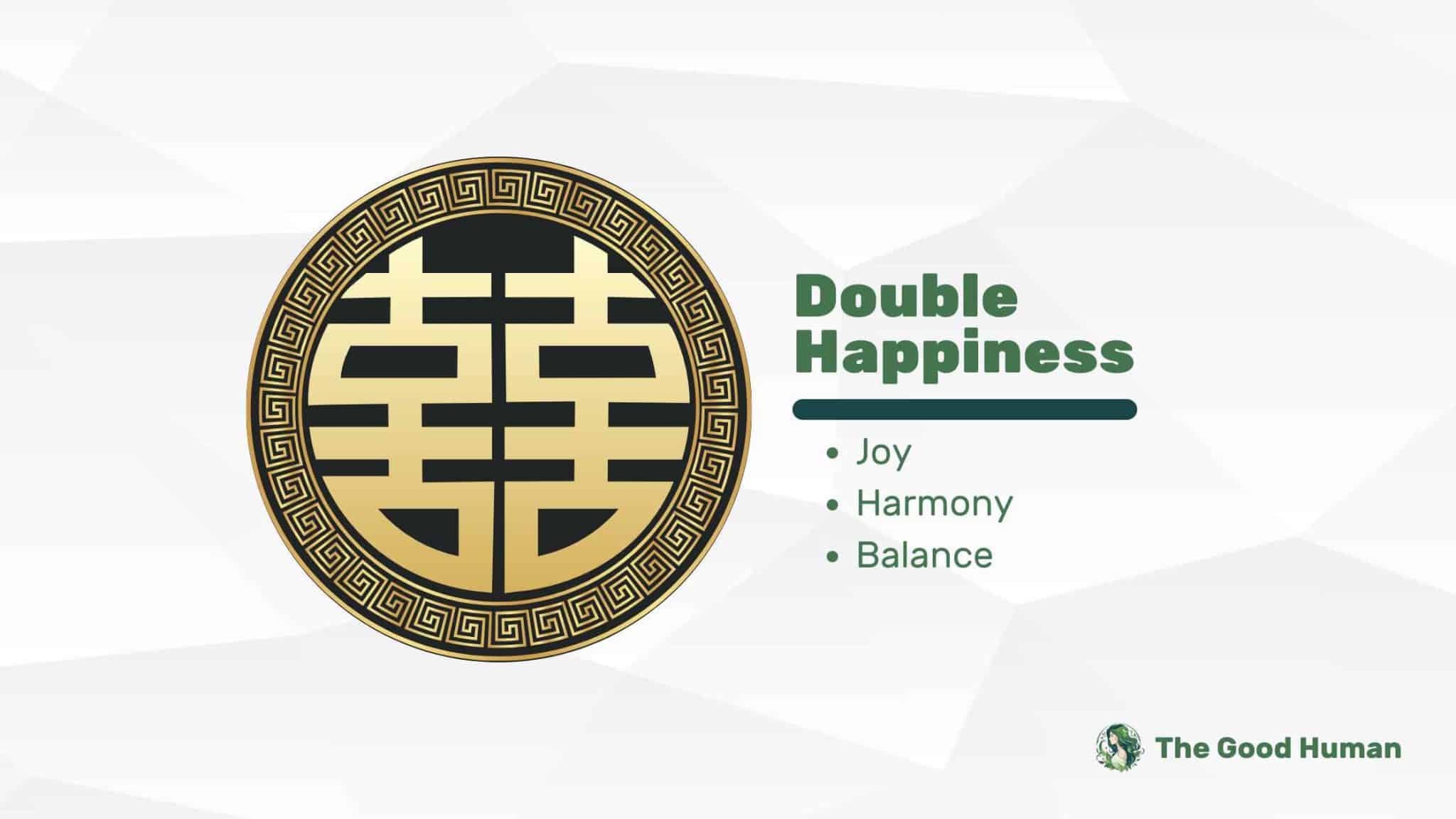
The Double Happiness character is often seen at Chinese weddings as a symbol of joy and matrimonial harmony. It also represents the broader concept of harmony and balance in life. From an environmental perspective, Double Happiness inspires us to find joy in sustainable living, celebrating the balance between human needs and the health of our planet and encouraging a lifestyle that brings happiness to ourselves and the Earth.
Eagle
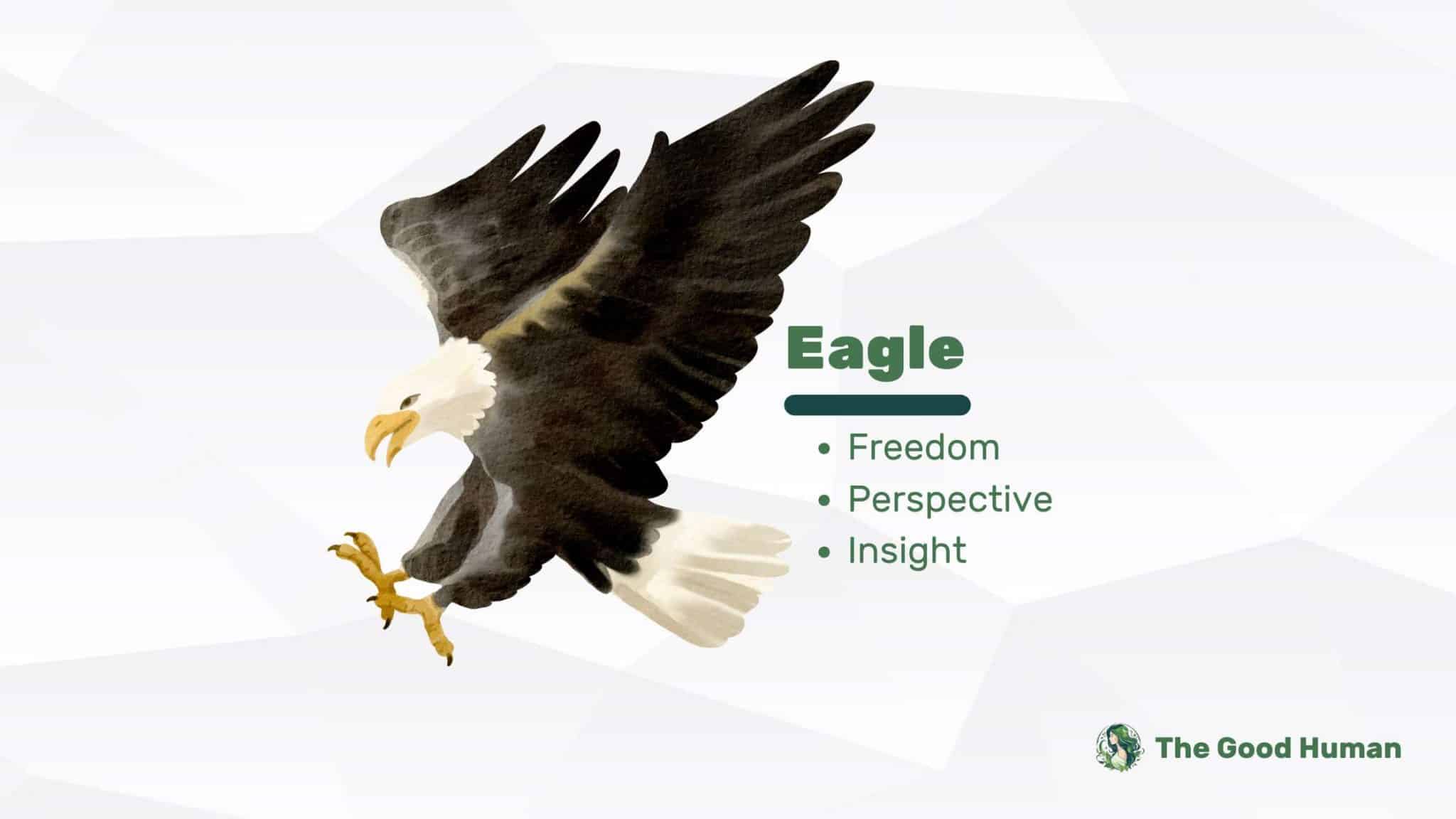
With its soaring flight and keen vision, the Eagle symbolizes freedom, perspective, and spiritual insight across many cultures. It reminds us to rise above material constraints and view our lives with a broader perspective, considering the long-term impact of our actions on the planet. The Eagle encourages us to embrace a vision of sustainability that transcends immediate benefits, aiming for a future where humans and nature coexist in harmony.
Earth Medicine Wheel
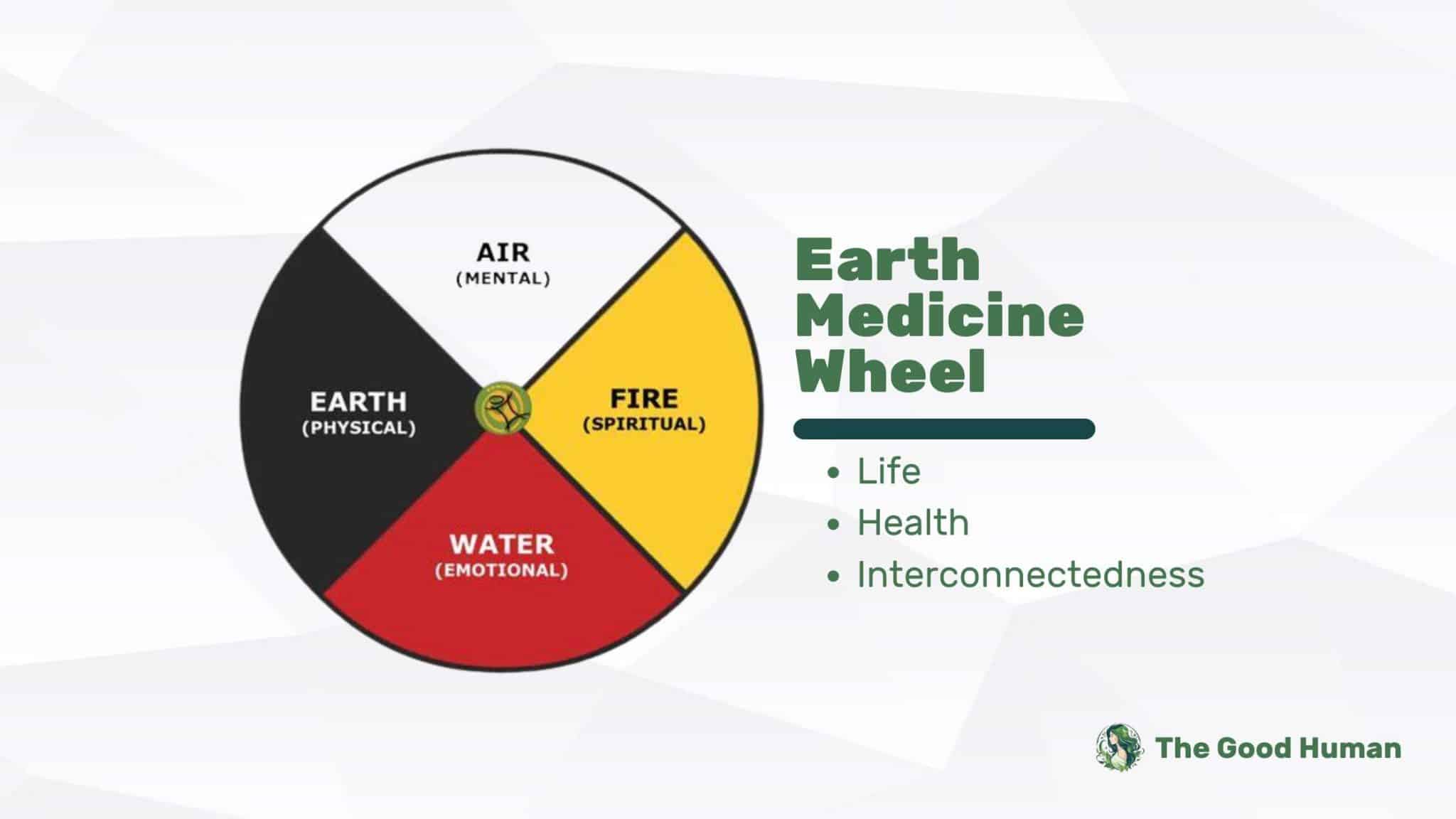
Native American cultures use the Earth Medicine Wheel to symbolize life and health, encapsulating the universe’s harmony and the interconnectedness of all living things. It teaches us about the cycles of nature, the balance of the elements, and our place within the web of life. This symbol is a poignant reminder of the need to live in balance with the Earth, respecting its cycles and working to preserve its health and vitality.
Fish (Ichthys)
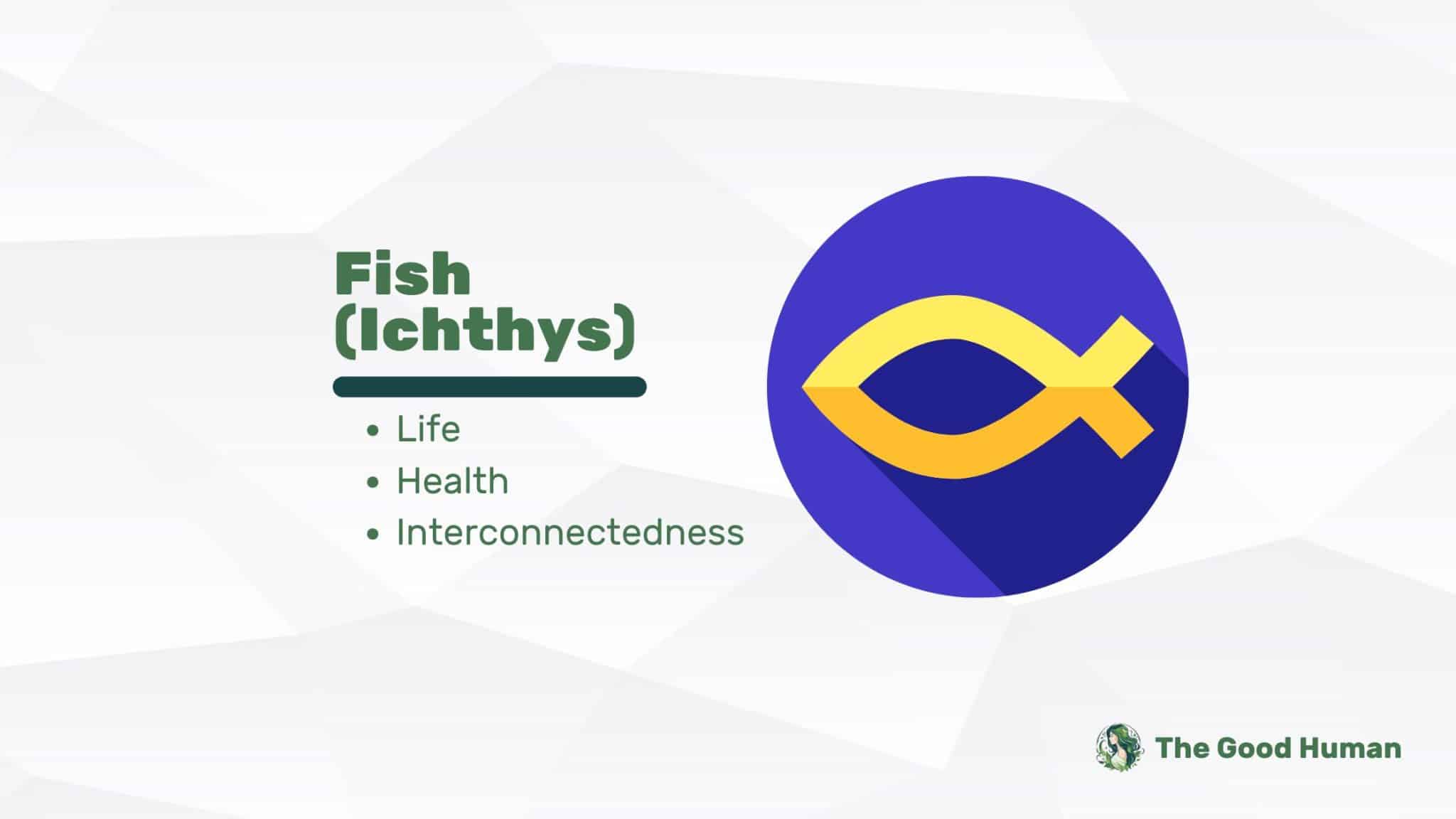
The Fish, or Ichthys, was an early Christian symbol representing faith, abundance, and the teachings of Christ. Beyond its religious connotations, the Fish symbolizes the sustenance and life that water bodies provide, reminding us of the importance of conserving water and the aquatic ecosystems vital to the planet’s health.
Through these symbols, we see a tapestry of teachings and insights that span cultures and epochs, each offering unique perspectives on our relationship with the environment. They remind us that spirituality and sustainability are deeply intertwined, guiding us toward a more conscious and harmonious existence.
Flower of Life
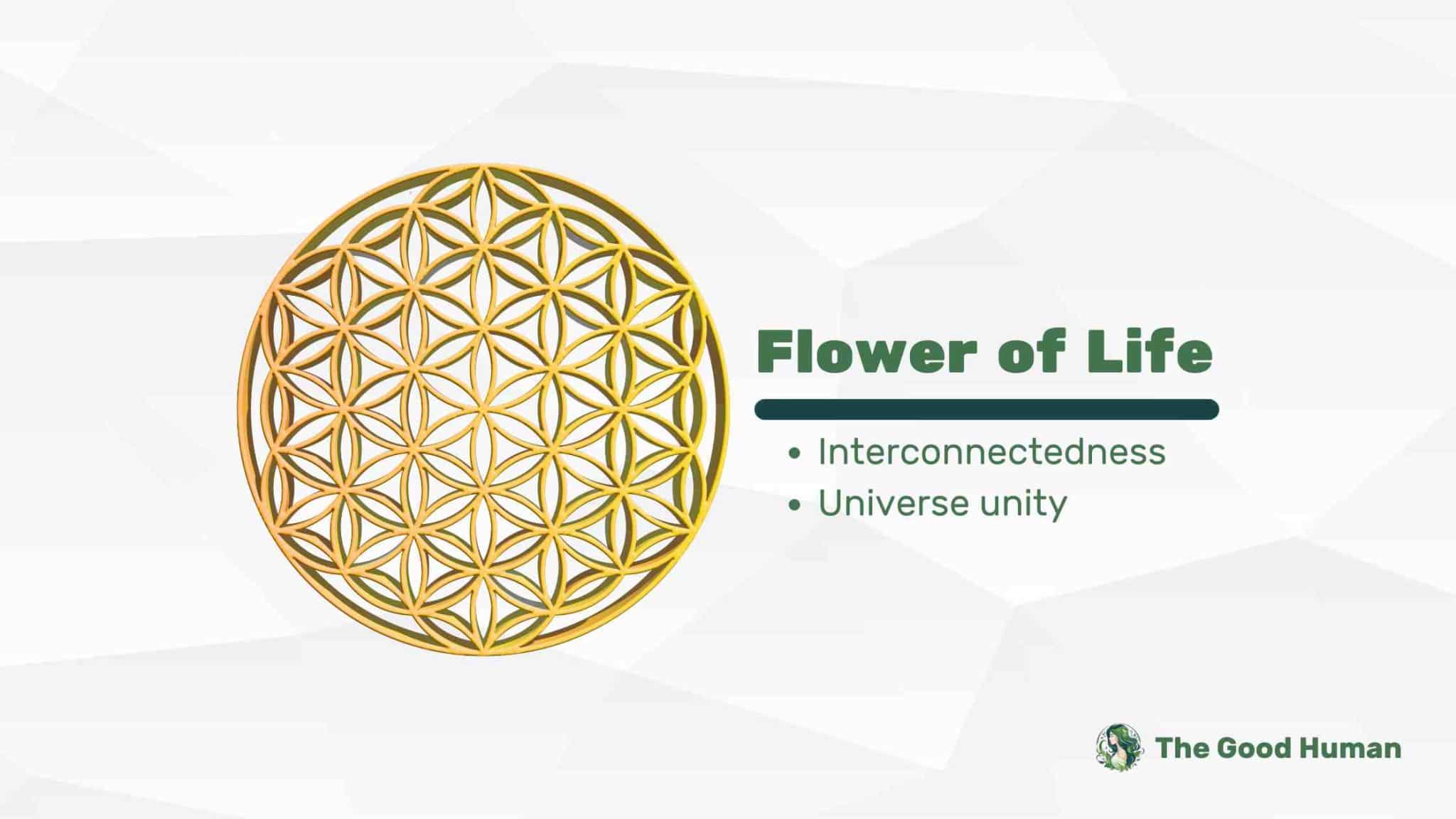
The Flower of Life, a geometric pattern consisting of overlapping circles arranged in a flower-like pattern, symbolizes the fundamental forms of space and time. This ancient symbol, found in various cultures worldwide, represents the interconnectedness of all life and the underlying unity of the universe.
In our journey toward environmental sustainability, the Flower of Life reminds us of the delicate balance and interdependence of all living things. It encourages us to see ourselves as part of a larger whole, advocating for actions that honor and preserve the intricate web of life.
Gayatri Yantra
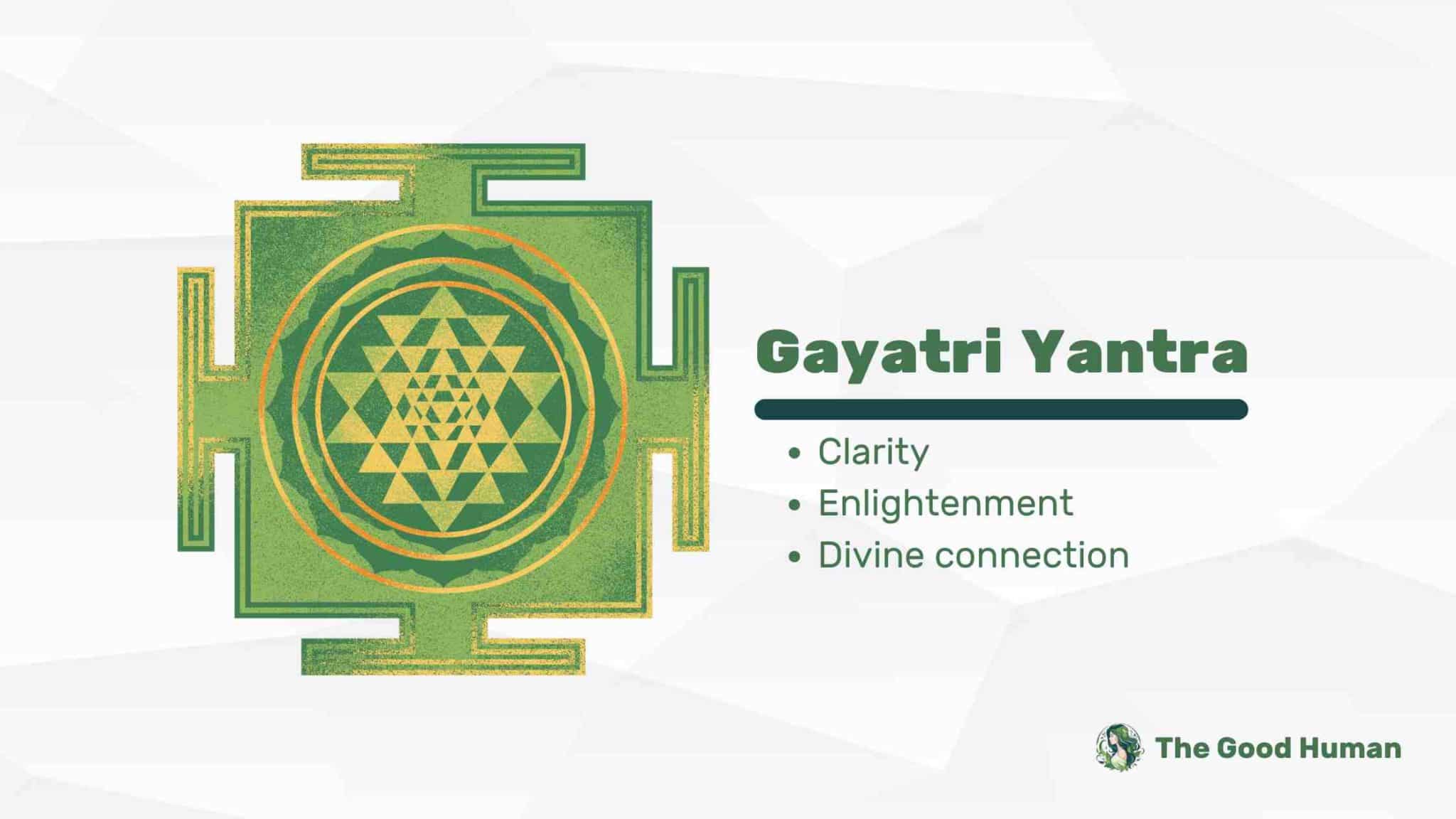
The Gayatri Yantra, associated with the Gayatri Mantra, is a form of spiritual geometry used in meditation to bring clarity, enlightenment, and connection to the divine. The yantra’s interlocking triangles and geometric patterns symbolize merging of the physical and spiritual realms.
For those committed to environmental stewardship, the Gayatri Yantra inspires a deeper connection to the sun’s energy and the natural world, emphasizing the importance of living in harmony with the Earth’s rhythms and cycles.
Hamsa
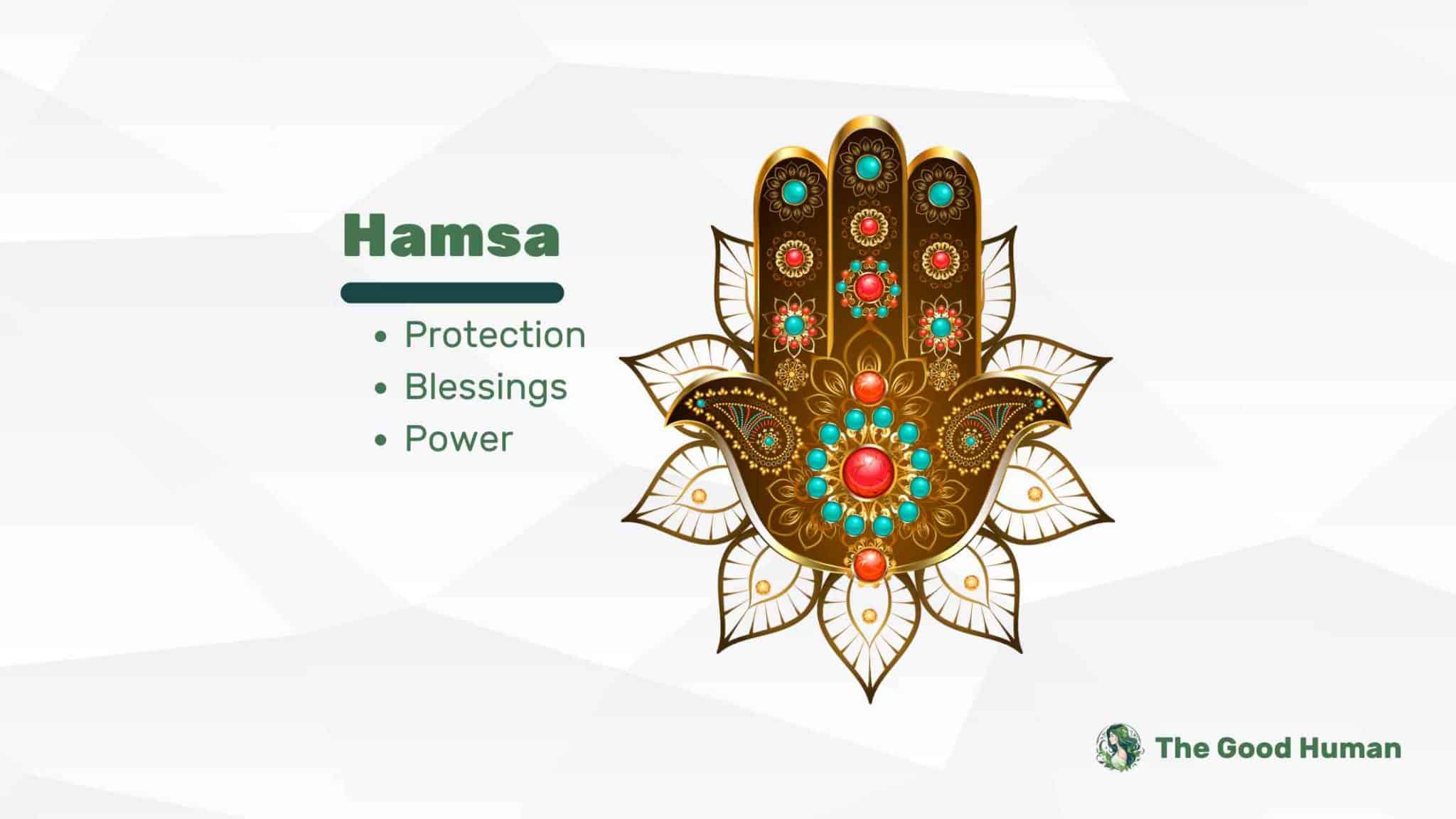
The Hamsa, a palm-shaped amulet famous throughout the Middle East and North Africa, represents protection, blessings, and power. Often featuring an eye in its center, it is believed to ward off the evil eye and bring good fortune. From an environmental perspective, the Hamsa symbolizes the protective care we must extend to our planet, guarding it against harm and fostering a healthy, thriving Earth for future generations.
Khanda
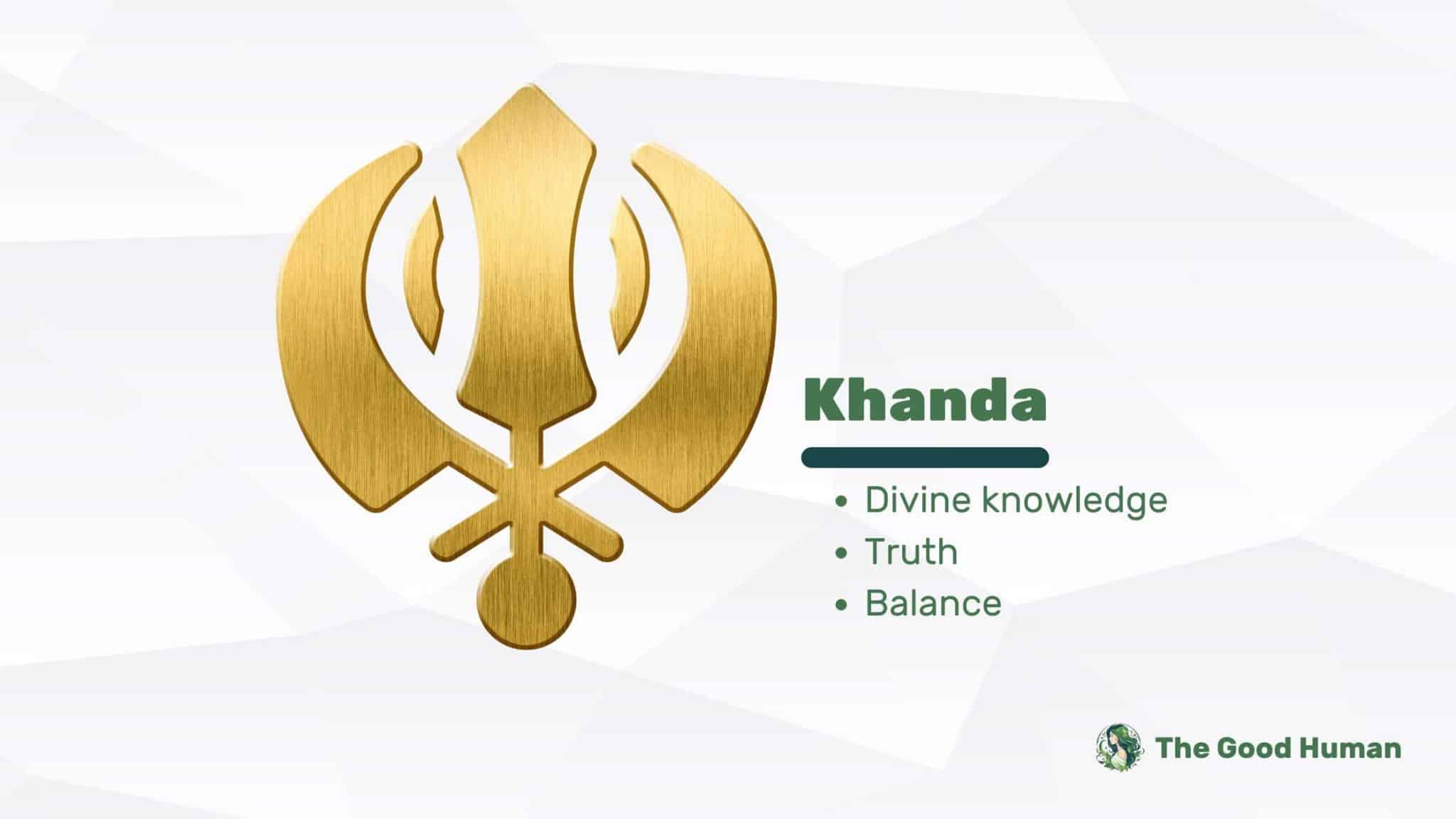
The Khanda symbolizes Sikhism, featuring a double-edged sword flanked by two single-edged swords and a circle. It represents divine knowledge, the importance of truth, and the balance between spiritual and temporal obligations. For those passionate about the environment, the Khanda reminds us of the need for balance in our lives and the importance of defending truth and justice, including the truth about the environmental challenges we face and the justice needed for all living beings.
Lotus
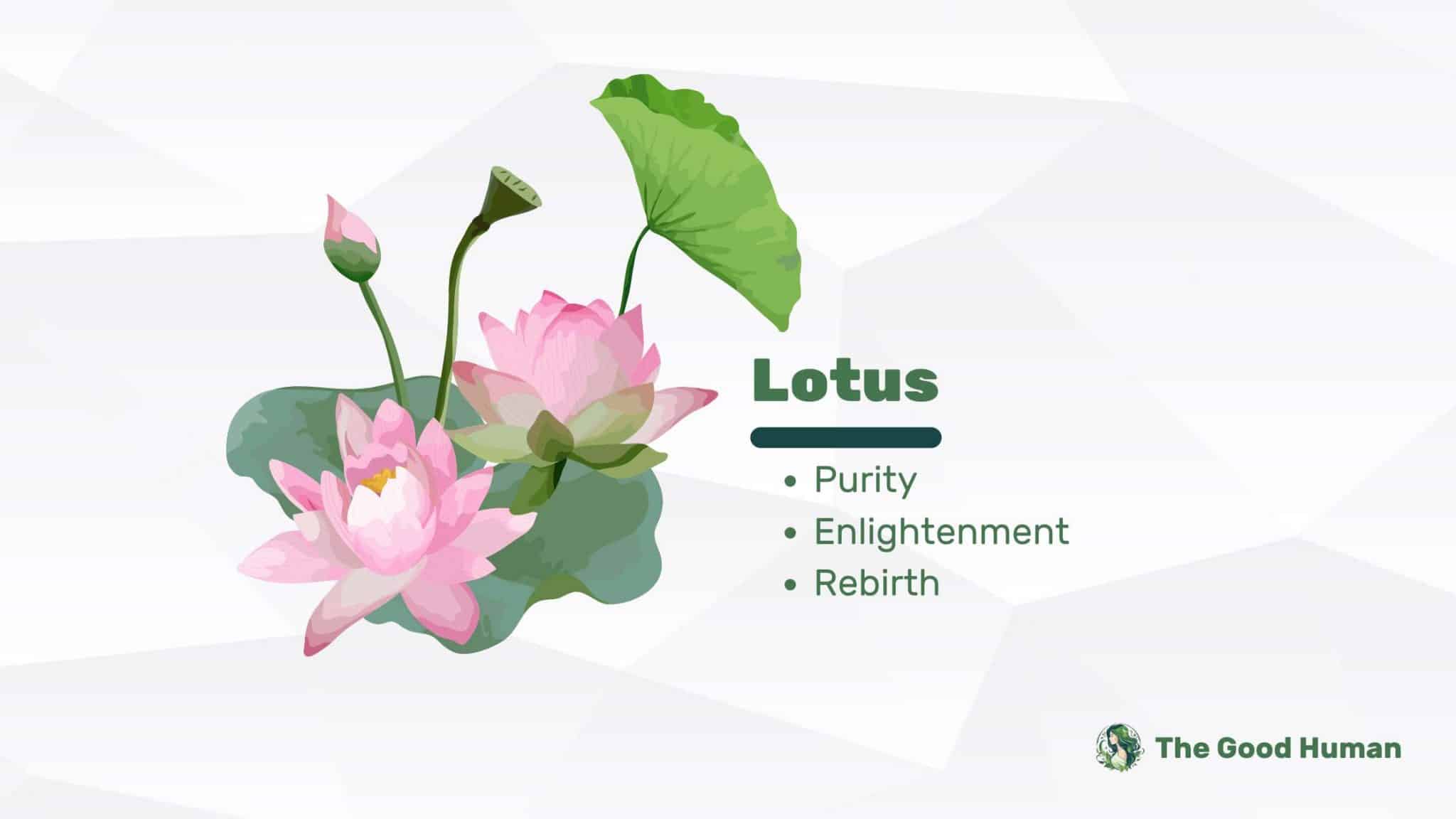
The Lotus flower, emerging pristine from muddy waters, symbolizes purity, enlightenment, and rebirth across many Asian cultures and religions. It teaches us about the beauty and resilience of nature, encouraging us to rise above pollution and destruction to create a cleaner, more sustainable world. The Lotus reminds us that despite environmental challenges, there is hope for renewal and regeneration.
Om
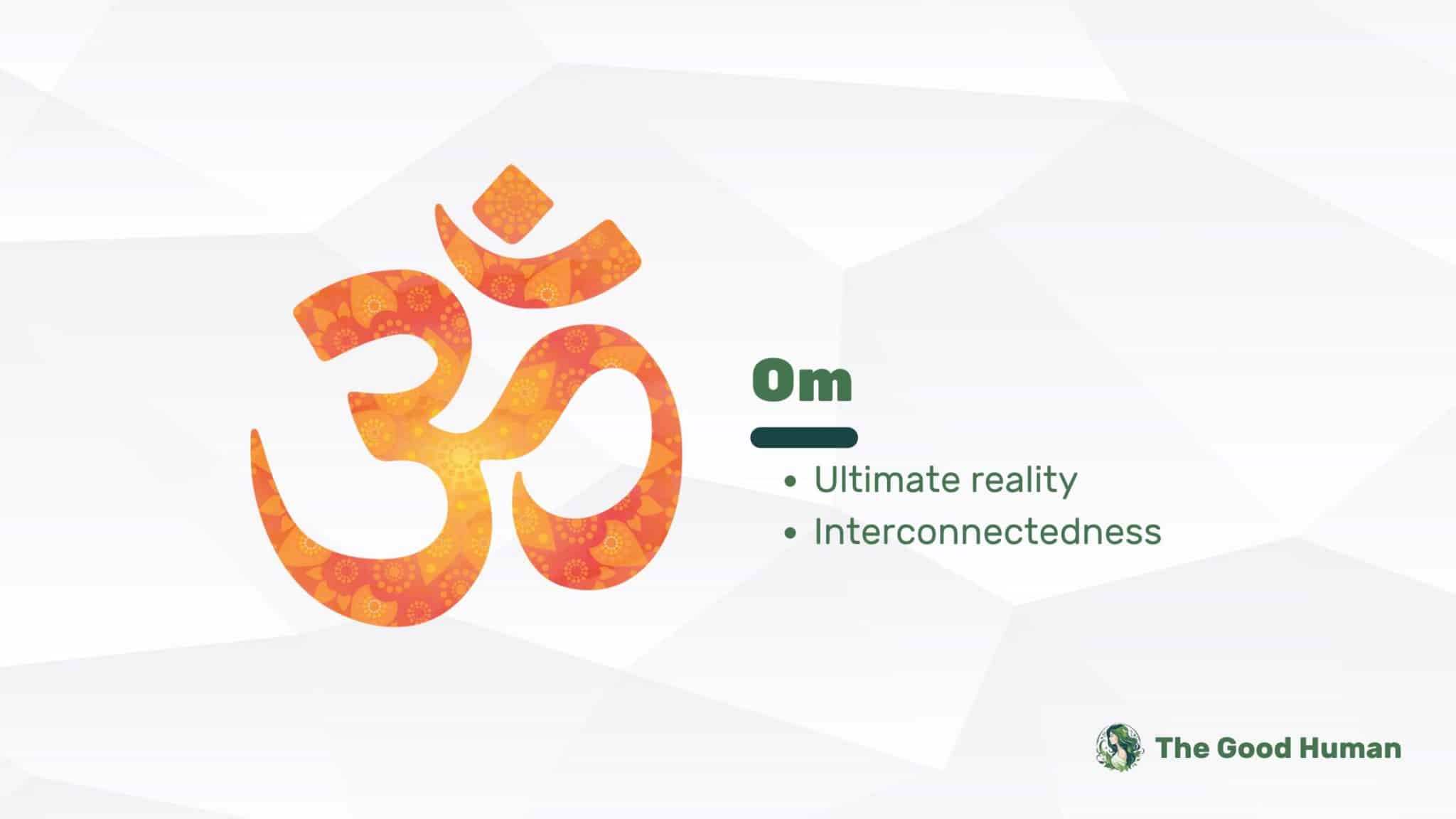
Om, a sacred sound and spiritual icon in Indian religions, represents the essence of the ultimate reality, consciousness, or Atman. It signifies the interconnectedness of all things in the universe. For environmentalists, Om symbolizes our deep connection with the natural world and the universal sound of harmony and balance. It invites us to align our actions with the rhythm of the Earth, promoting peace and sustainability.
Peace Symbol
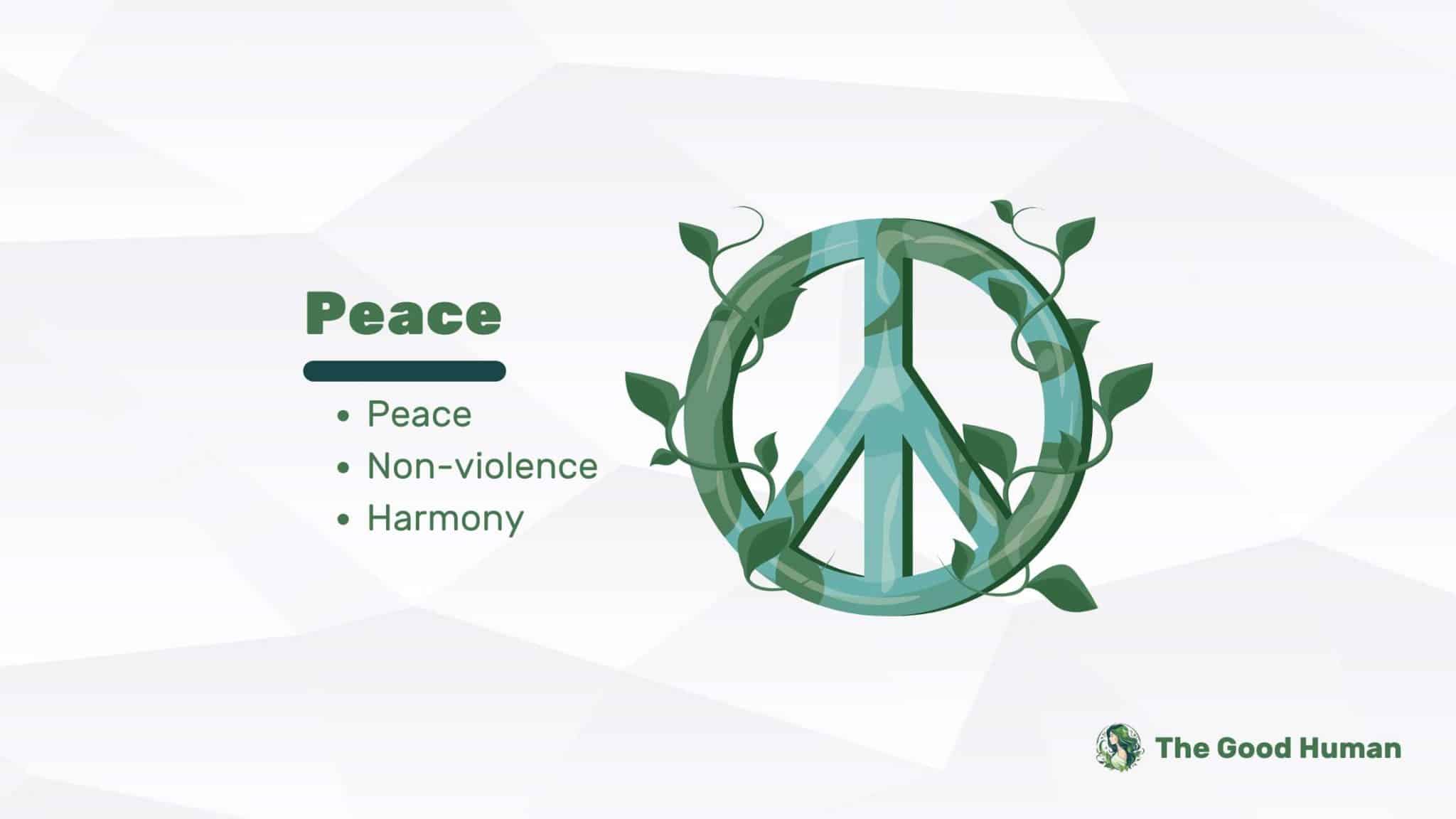
The modern peace symbol, a circle with three lines within it, was initially designed for the British nuclear disarmament movement. It has become a universal symbol of peace, non-violence, and harmony. In the context of environmentalism, it calls for peaceful coexistence with nature and advocates for actions that prevent harm to our planet, promoting a sustainable and harmonious relationship between humanity and the Earth.
Pentacle
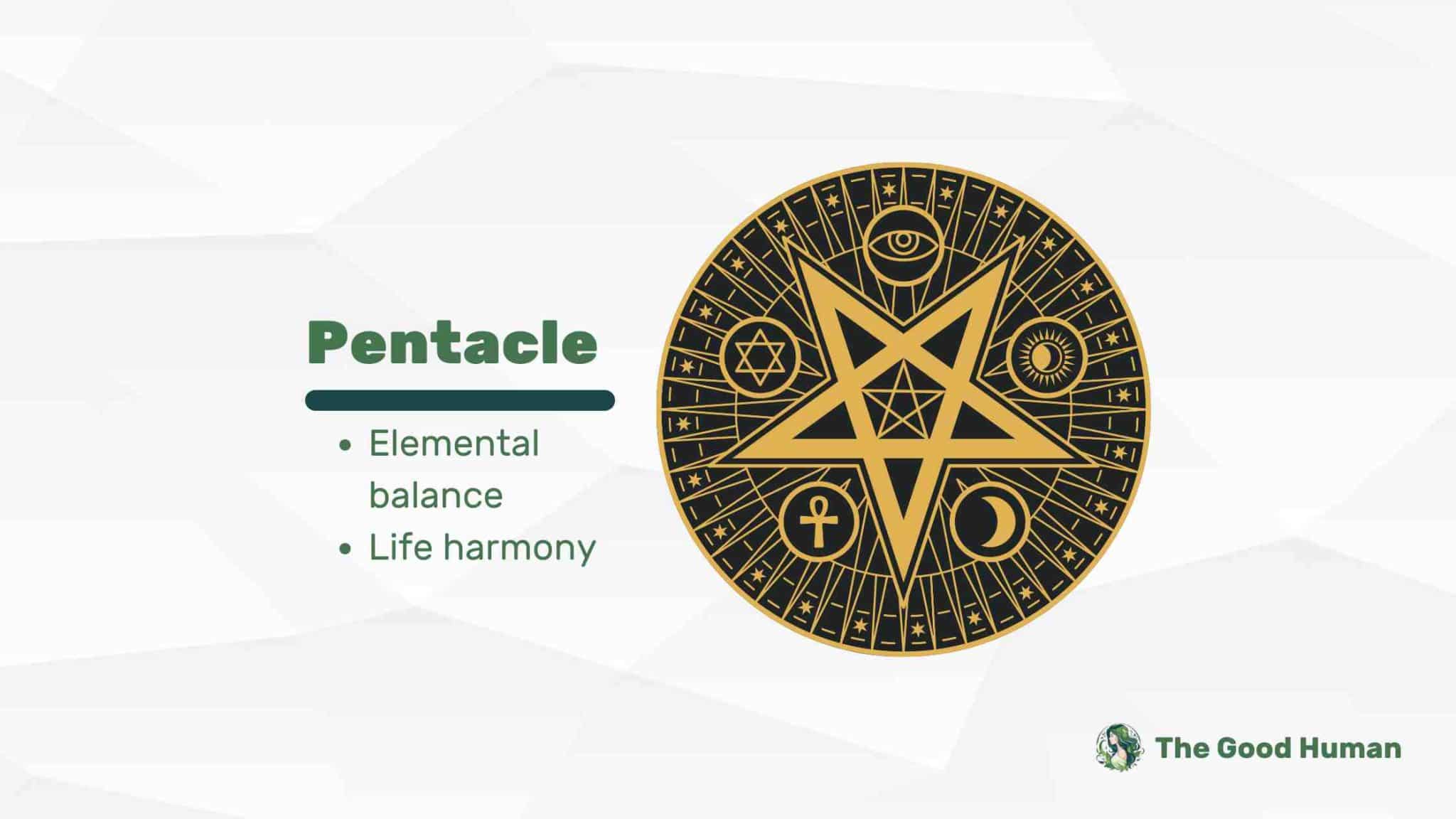
The Pentacle, a five-pointed star within a circle, is often associated with Wicca and paganism, symbolizing the elements of earth, air, fire, water, and spirit. It represents the interconnectedness of all components and the balance necessary for life to thrive. For those concerned with environmental protection, the Pentacle reminds us of our planet’s elemental harmony and the critical need to maintain balance in the natural world.
Shinto Symbol

Shinto, the indigenous spirituality of Japan, doesn’t have a single, universally recognized symbol. Still, the Torii gate is often associated with it, marking the entrance to a sacred space and symbolizing the transition from the mundane to the sacred. In environmental terms, the Torii invites us to view the Earth as a holy space deserving of respect and protection and encourages us to live in a way that honors this sacredness.
Snake
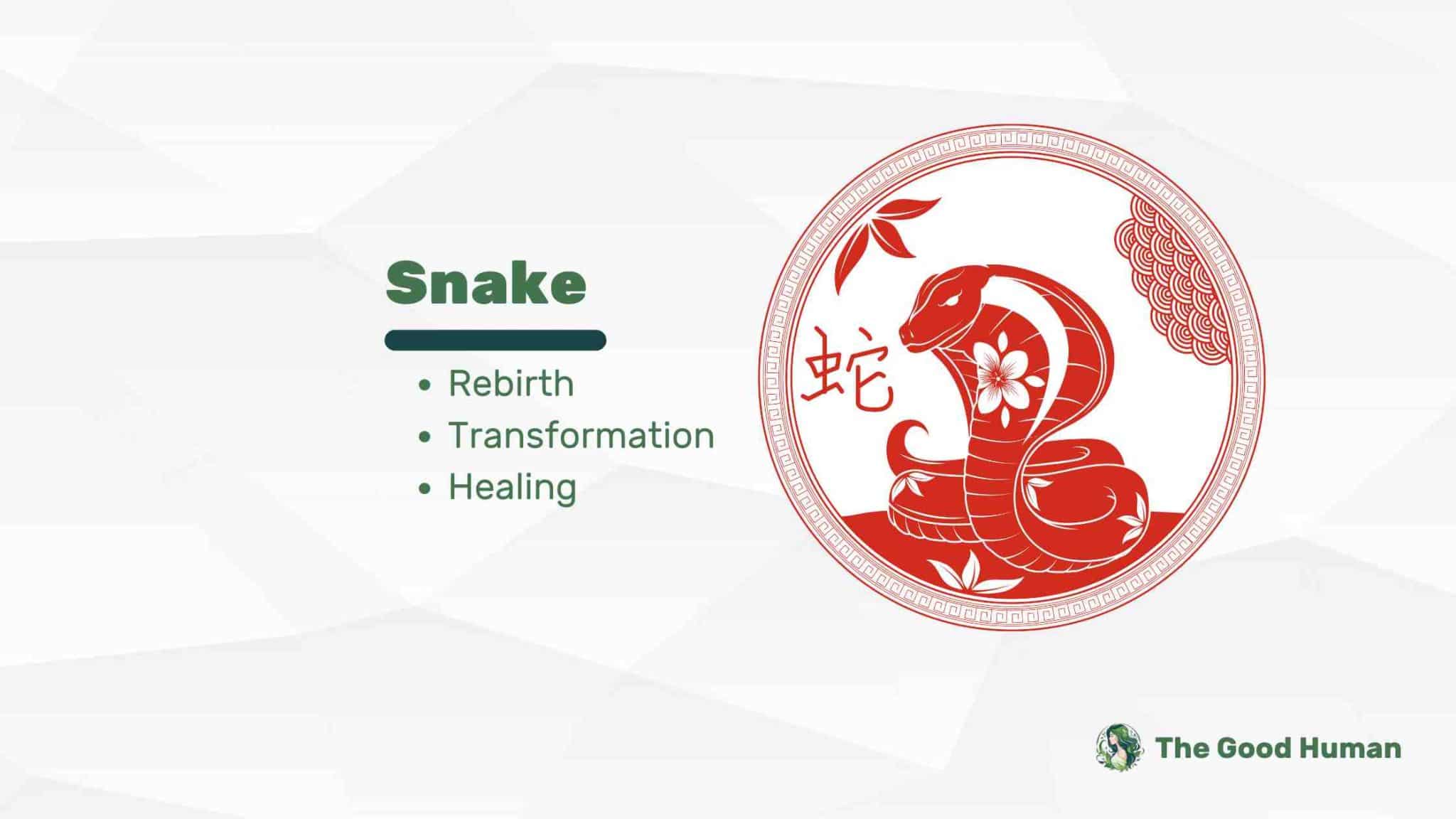
The Snake, appearing in the symbolism of many cultures, often represents fertility, rebirth, transformation, and healing. Its shedding skin is seen as a symbol of renewal and the ability to emerge anew. In environmental contexts, the Snake reminds us of the cyclical nature of life and the possibility of renewal and recovery, inspiring us to support the Earth’s capacity for regeneration.
Spiral
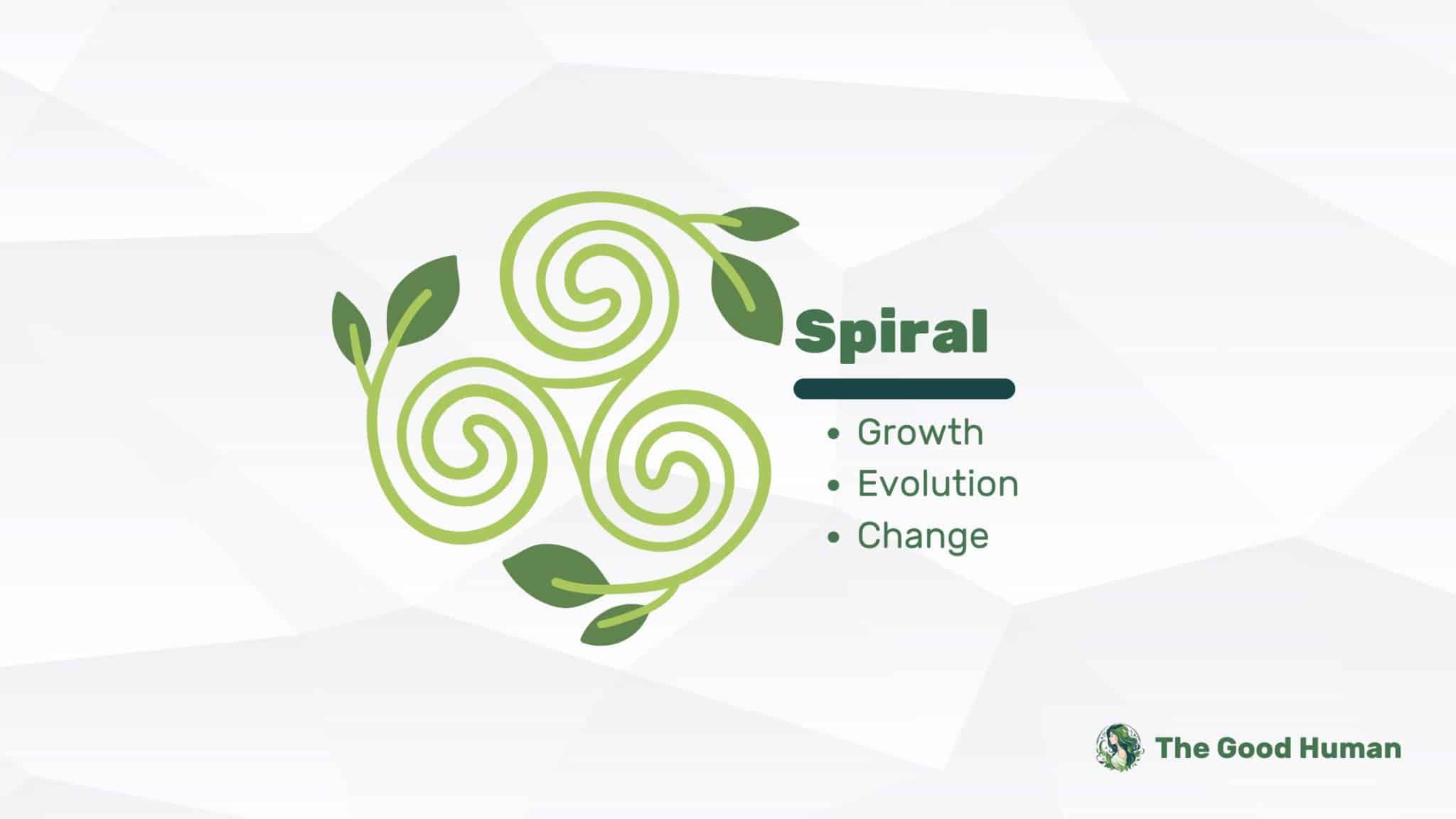
The Spiral, found in nature from galaxies to seashells, symbolizes growth, evolution, and the dynamic process of change and transformation. It reminds us of the perpetual motion of the universe and the constant change inherent in life. For environmentalists, the Spiral encourages us to embrace change positively, recognizing our role in the ongoing evolution of our planet towards sustainability.
Star of David
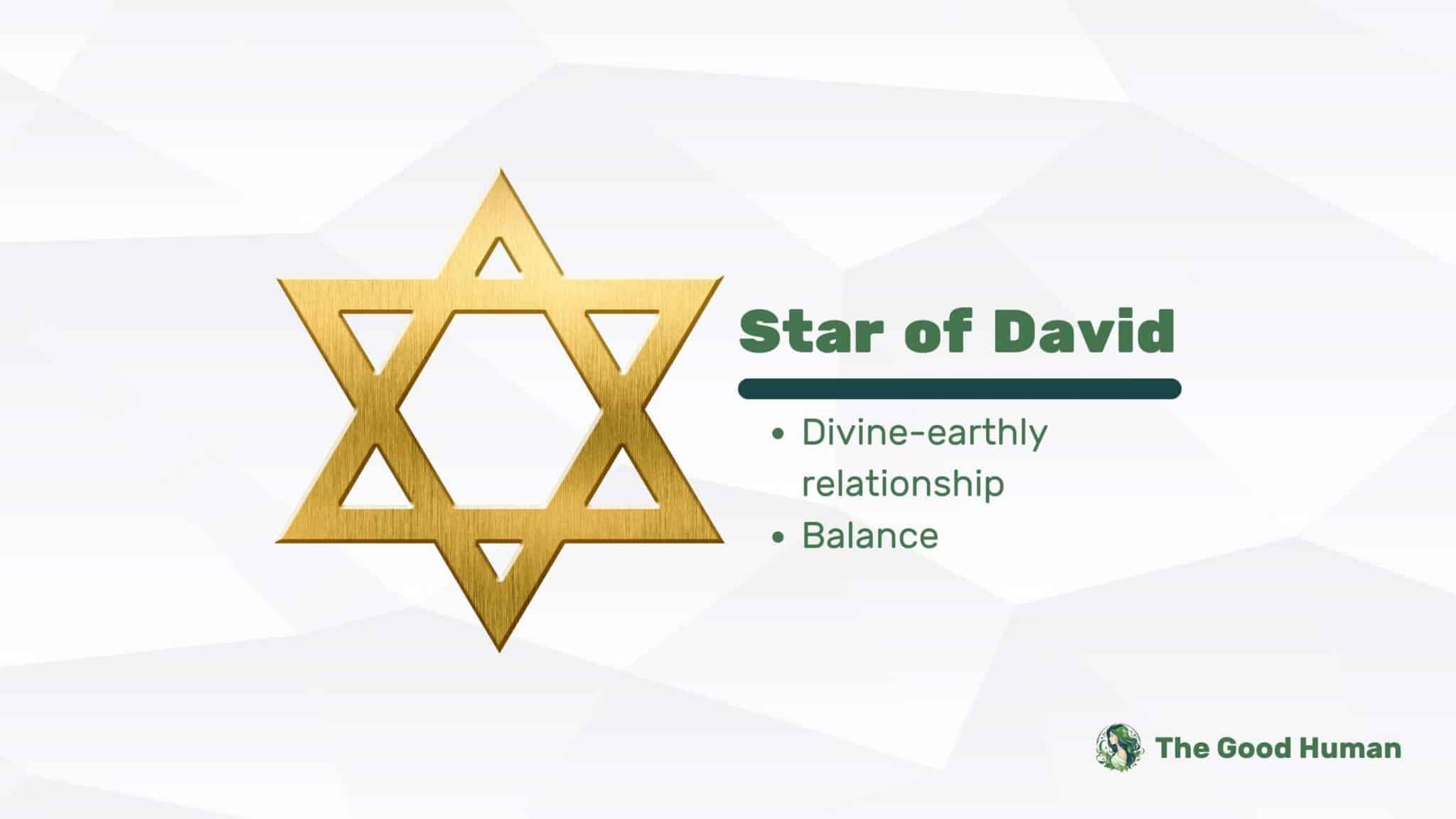
With its two interlocking triangles, the Star of David is a symbol rich in meaning and history, deeply rooted in Jewish tradition. It represents the relationship between God and the Jewish people and, more broadly, the interplay between the divine and the earthly. The upward-pointing triangle symbolizes our aspirations toward the sacred, while the downward-pointing triangle reminds us of the divine’s presence in our everyday lives.
In the context of environmental stewardship, the Star of David inspires us to see the divine in all of creation, recognizing the sacredness of the earth and our duty to protect it. It speaks to a balance between taking from the world and giving back, between consumption and conservation. This symbol invites us to reflect on how our spiritual beliefs can inform our actions towards the planet, encouraging balance, respect, and sustainable living.
Triade
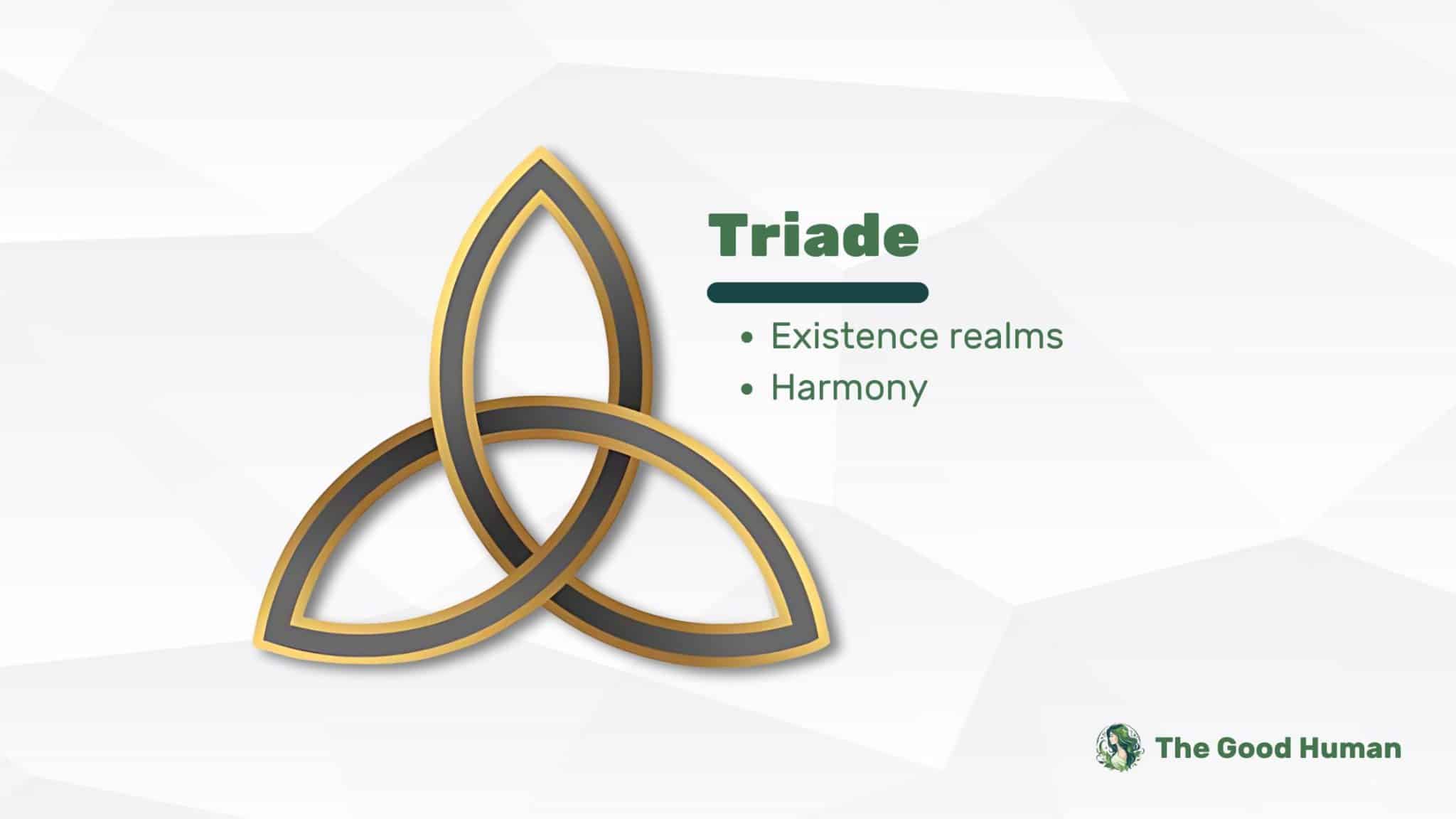
The Triade, or the triple spiral, is a mesmerizing symbol from ancient Celtic tradition. Often found carved into stones and monuments across the Celtic lands, this symbol represents the three realms of material existence: land, sea, and sky. But its significance dives much more profoundly, symbolizing movement, progress, and the eternal cycle of life, death, and rebirth.
For those of us on a journey towards environmental consciousness, the Triade is a powerful reminder of our world’s natural cycles. It encourages us to respect and protect these cycles, whether it’s through sustainable farming practices that honor the land, conservation efforts to protect our seas and oceans, or initiatives to clean the air we all share.
Yin Yang
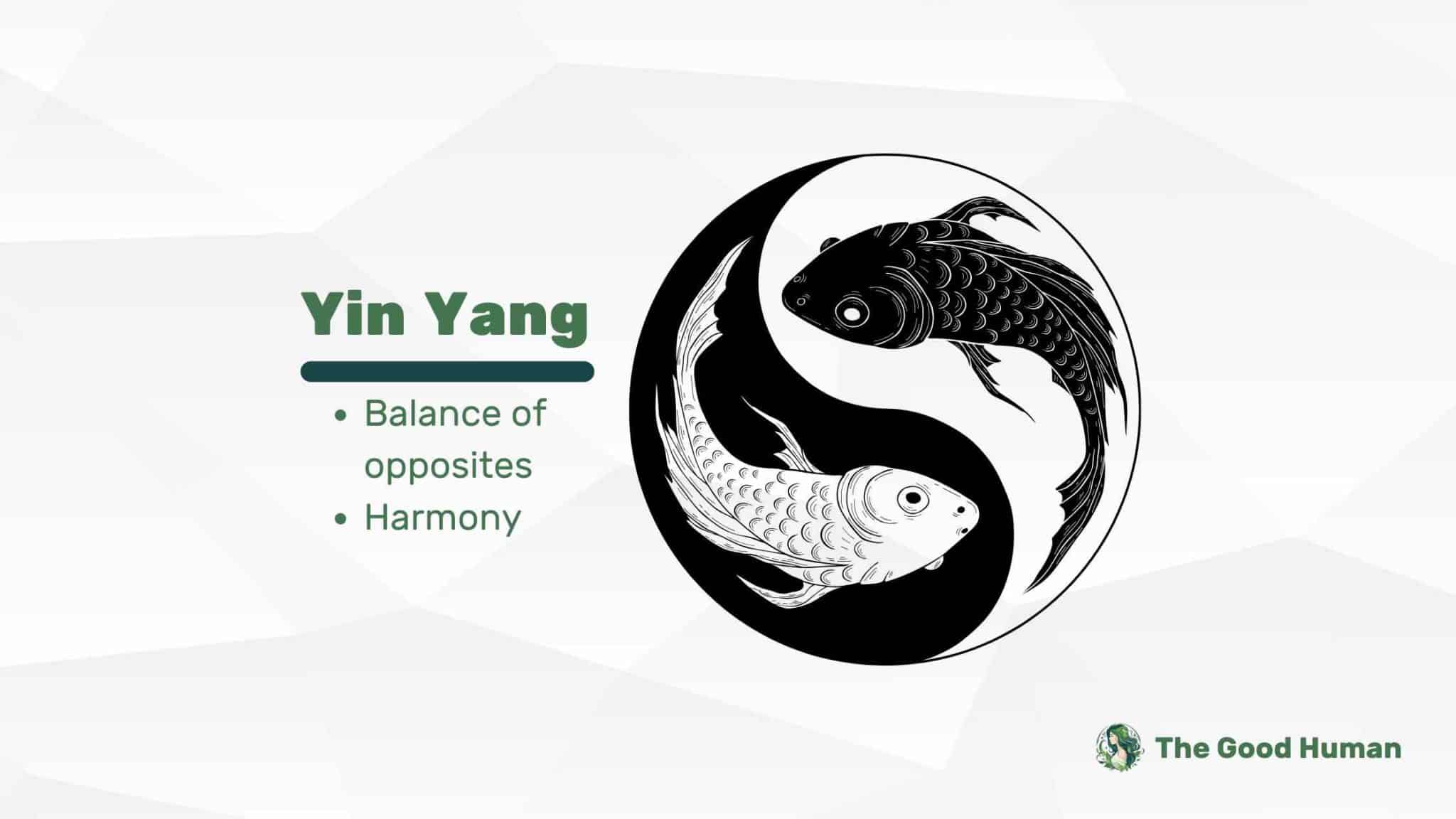
The Yin Yang is a symbol that transcends its Taoist roots, becoming a global icon of balance, harmony, and the interconnectedness of opposites. It illustrates how seemingly contrary forces—light and dark, action and stillness, masculine and feminine—are complementary and interconnected within the natural world. This dynamic balance keeps the universe in order, offering profound insights into our relationship with the environment.
From an environmental perspective, the Yin Yang reminds us to maintain balance in our ecosystems. It encourages us to seek sustainable solutions that do not favor one aspect of nature at the expense of another but rather work in harmony with the natural world.
A Personal Journey: The Lotus and Me

On a remarkably serene morning, during one of my solitary walks along the banks of a gently flowing river near my home, I stumbled upon a sight that would forever change my perspective on life and my environmental advocacy work.
There, amidst the murky waters, bloomed a solitary Lotus flower, its petals open wide to the dawning sun, untouched by the mud from which it sprang. This moment felt like a message, a symbol, directly speaking to my soul.
The Lotus symbolizes purity, enlightenment, and rebirth across many Asian cultures and religions. It teaches us about the beauty and resilience of nature, encouraging us to rise above pollution and destruction to create a cleaner, more sustainable world. But seeing it in person, experiencing its unblemished beauty amidst the surrounding muddiness, brought home its symbolic power in a way no book or lecture ever could.
This encounter became a turning point for me. It embodied the hope for renewal and regeneration, even amid environmental challenges that sometimes feel insurmountable. It reminded me that, just like the Lotus, we too can thrive amidst adversity, using the obstacles that threaten to mar us as stepping stones to rise above and bloom in full glory.
Inspired by this realization, I embarked on what I now call my ‘Lotus Project’—a personal and community initiative to clean up local water bodies while educating others about the importance of water conservation and the sacredness of our natural environment. This project, though small in scale, symbolizes my commitment to the planet, a tangible manifestation of the spiritual connection I felt that day by the river.
The Role of Spiritual Symbols in Contemporary Society
In today’s fast-paced, technology-driven world, ancient spiritual symbols have lost their relevance. Yet, the opposite is true. These symbols continue to find new life in contemporary society, evolving into influential art, literature, and even pop culture motifs.
Symbols like the Peace Symbol, initially designed for the nuclear disarmament movement, have been embraced by global peace and environmental movements, symbolizing a universal desire for harmony with nature and each other. The Yin Yang, a Taoist symbol of balance, has permeated popular culture, representing the ongoing search for equilibrium in our personal and collective lives.
Moreover, the resurgence of interest in personal and spiritual growth has seen many turning to these ancient symbols for guidance, healing, and inspiration. They serve as meditation, self-reflection, and personal transformation tools, bridging the spiritual and mundane gap.
The Science and Spirituality Behind Symbols
Recent studies in psychology and neuroscience have begun to shed light on how and why spiritual symbols profoundly impact the human psyche. Symbols, by their very nature, communicate directly with the subconscious mind, bypassing the analytical thinking process to evoke deep emotional responses and insights.
Research in neurotheology has explored the brain circuitry associated with spirituality, revealing the periaqueductal gray (PAG) as a critical hub for spiritual experiences. This discovery underscores spirituality’s potential clinical relevance in managing physical and emotional pain and enhancing psychotherapy by fostering a sense of connectedness and well-being.
How to Interpret Spiritual Symbols in Your Life
Interpreting spiritual symbols in your life is a profoundly personal journey that requires introspection, openness, and a willingness to explore the unknown. Here are a few steps to guide you on this path:
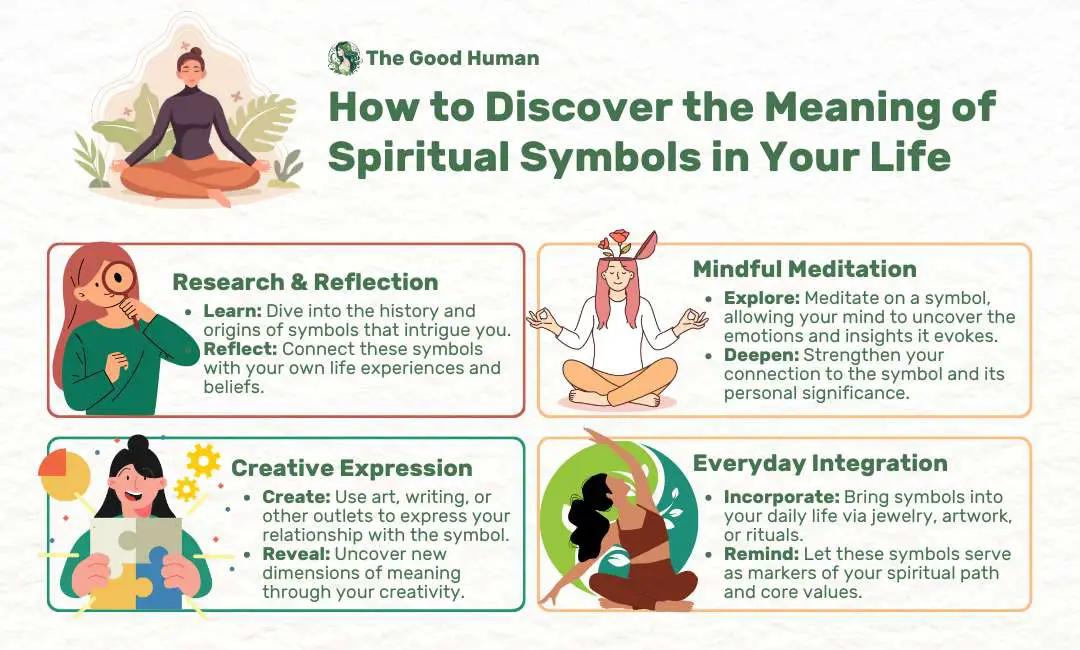
Research and Reflection: Learn about the history, origins, and meanings of symbols that resonate with you. Reflect on how these symbols relate to your own experiences and beliefs.
Mindful Meditation: Spend time meditating on a symbol, allowing your mind to explore the feelings, thoughts, and insights that arise. This practice can deepen your connection to the symbol and its significance.
Creative Expression: Engage with symbols creatively through art, writing, or other forms of expression. This can help externalize your internal dialogue with the symbol, revealing new layers of meaning.
Everyday Integration: Find ways to incorporate symbols into your daily life, whether through jewelry, artwork, or simple rituals. This can remind you of your spiritual journey and the values you hold dear.
Conclusion: Embracing the Wisdom of Symbols
Exploring spiritual symbols across cultures and religions offers us a unique lens through which to view our interconnectedness with the universe and each other. These symbols, from the ancient Ankh to the modern Peace Symbol, serve as historical artifacts and living testaments to humanity’s quest for understanding, connection, and harmony. They remind us that, despite our diverse paths and beliefs, we share a common spiritual heritage that transcends time and space.
These symbols’ personal and societal relevance today underscores the timeless human need for meaning, purpose, and belonging to something greater than ourselves. By engaging with these symbols through meditation, creative expression, or daily practice, we can tap into their deep wells of wisdom and insight, enriching our lives and guiding us toward more mindful, compassionate, and sustainable living.
FAQs
What are spiritual symbols?
Spiritual symbols are visual representations that embody complex ideas, beliefs, and concepts about the universe, spirituality, and human existence. They bridge the material and spiritual realms, offering insights and guidance on life’s journey.
What is the universal spiritual symbol?
While all cultures and religions recognize no single symbol as universal, specific themes—such as the circle, representing eternity and unity, and the tree of life, symbolizing interconnectedness and growth—are widespread across many traditions, reflecting shared human experiences and values. These symbols transcend specific cultural or religious contexts, resonating with a universal appeal to our collective consciousness.
Are symbols religious?
While many spiritual symbols originate within specific religious traditions, their meanings and significance can extend beyond religious boundaries to offer universal insights. Symbols like the lotus flower, representing purity and enlightenment in both Hinduism and Buddhism, or the tree of life, found in numerous cultures and belief systems, illustrate how spiritual symbols can transcend their religious origins to speak to broader human themes of connection, transformation, and renewal.

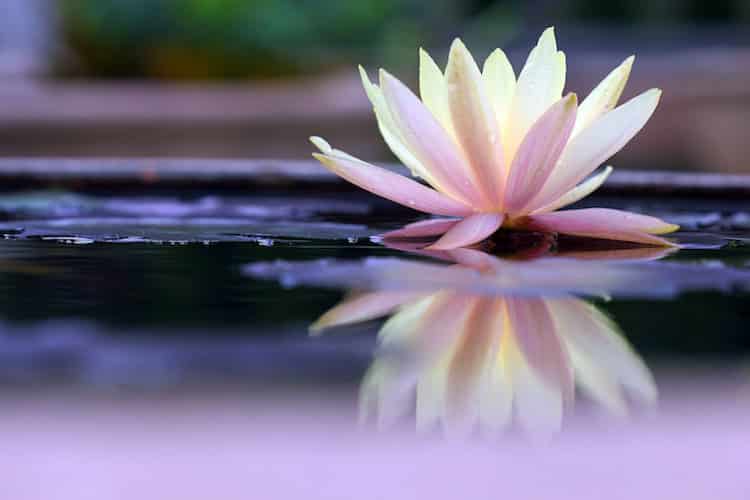






giving the bird
Debbie Farr. Thank you for the kind gift of the bird. A beautiful symbol.
Peace.
What is your problem?
Really cool to hear about.
But on the pentagram you.. could have chosen another picture. When it points upwards it is protective and such. But when it points down it represents Satan and stuff so important detail lol.
Two points at the top represent the forces of nature having control of the issue. Certain teachings claim it to be satanic because these are organizations whose mission and intent is to turn society away from anything and everything that brings their spiritually to anything that is not under the control of their organization.
Fascinating! Well put together! I would like to comment on the cross. Before Christians adopted the cross symbol to remind themselves of their Faith it was used during ancient times as a protection symbol from evil spirits aka talisman. Personally, I think it is all “bullshit!” The Earth’s Inhabitants has so many religious or spiritual prayers, objects and rituals used to protect and ward off evil that it is ridiculous. They can’t see that none of it works! Right now, Russia wants to conquer Ukraine and the US is wondering if we are going to have to nuke Putin! Lol…lol… “Will the [Real] Holy & Omnipotent God, PLEASE STAND UP!!!” LOL…LOL… Thanks for the [Outlet aka Exhale!!!] In my opinion, the Earth’s Inhabitants is so deep in [bullshit]; we are not going ever dig our way out of it until to CAST-OFF [ALL] GODS & SPIRITS!!! And begin to [TRUST] Ourselves and each Other!!! Thank YOU!
Yip the world is in a state of complete bullshit when it comes to religious superstition.
What works for the individual works for them on their own level of understanding.
To obtain a clear mind and an orderly life in this crazy world is the main objective i think.
Power wards and symbols have a place within the subconscious mind but man-kinds thoughts have been manipulated by the powers to keep them locked and chained to multiple interpretations of such things.
Universal laws do exist and to harness the energies through belief in ones ability to Think Feel and believe is the key to setting oneself free.
We have a bunch of free willed zombies that feed of others misfortunes just to benefit themselves all because they do not believe in the right to exercise a strain of thought out side of the confines of what has been given to them by mass media and global think tanks controlling sleeping populations with war and mind control.
Gated communities will be attacked if the right mindful teachings were being practiced by true students of metaphysical principals if they conducted real tangible effects through the hidden knowledge locked away from our senses.
Thank you for reading my speech
Just a point. Why show the pentagram reversed, if it is most often shown point up to represent spirit. down has negative connotations
Thank you for this article. A very interesting read and also enlightening. Hope to read more.